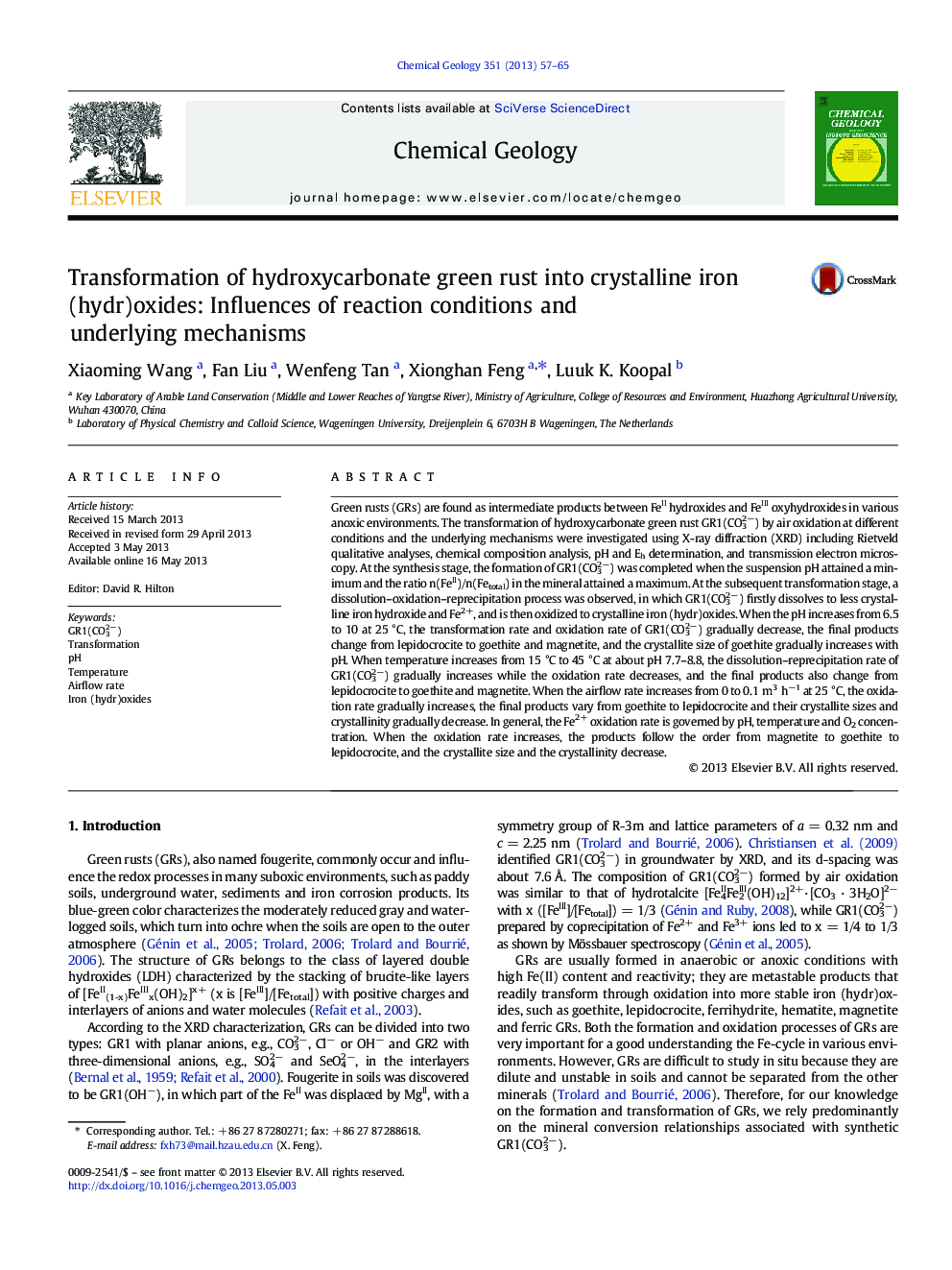| Article ID | Journal | Published Year | Pages | File Type |
|---|---|---|---|---|
| 6436898 | Chemical Geology | 2013 | 9 Pages |
â¢GR1(CO32â) transformation products depend on pH, temperature, and aeration.â¢Crystallite size of the produced goethite increases with increasing pH/temperature.â¢Products change from lepidocrocite to goethite and magnetite with pH/temperature.â¢Products change from goethite to lepidocrocite with high airflow rates.â¢Oxidation rate governs the crystallizing characteristics of the products.
Green rusts (GRs) are found as intermediate products between FeII hydroxides and FeIII oxyhydroxides in various anoxic environments. The transformation of hydroxycarbonate green rust GR1(CO32â) by air oxidation at different conditions and the underlying mechanisms were investigated using X-ray diffraction (XRD) including Rietveld qualitative analyses, chemical composition analysis, pH and Eh determination, and transmission electron microscopy. At the synthesis stage, the formation of GR1(CO32â) was completed when the suspension pH attained a minimum and the ratio n(FeII)/n(Fetotal) in the mineral attained a maximum. At the subsequent transformation stage, a dissolution-oxidation-reprecipitation process was observed, in which GR1(CO32â) firstly dissolves to less crystalline iron hydroxide and Fe2+, and is then oxidized to crystalline iron (hydr)oxides. When the pH increases from 6.5 to 10 at 25 °C, the transformation rate and oxidation rate of GR1(CO32â) gradually decrease, the final products change from lepidocrocite to goethite and magnetite, and the crystallite size of goethite gradually increases with pH. When temperature increases from 15 °C to 45 °C at about pH 7.7-8.8, the dissolution-reprecipitation rate of GR1(CO32â) gradually increases while the oxidation rate decreases, and the final products also change from lepidocrocite to goethite and magnetite. When the airflow rate increases from 0 to 0.1 m3 hâ1 at 25 °C, the oxidation rate gradually increases, the final products vary from goethite to lepidocrocite and their crystallite sizes and crystallinity gradually decrease. In general, the Fe2+ oxidation rate is governed by pH, temperature and O2 concentration. When the oxidation rate increases, the products follow the order from magnetite to goethite to lepidocrocite, and the crystallite size and the crystallinity decrease.
Graphical abstractDownload full-size image
